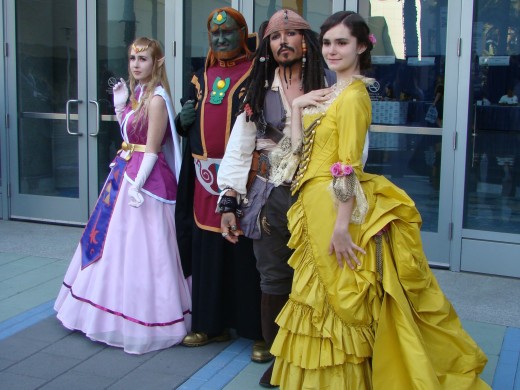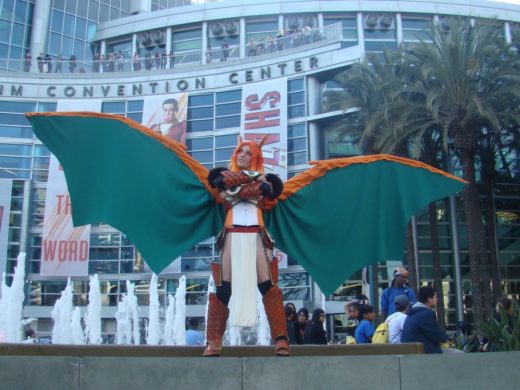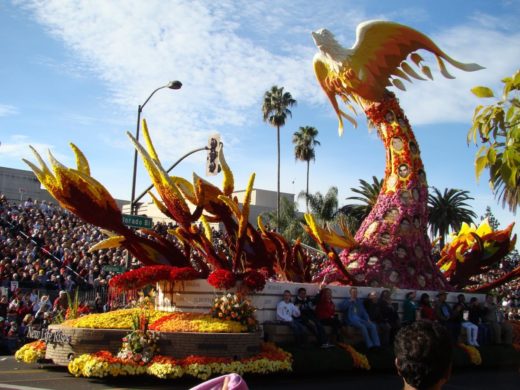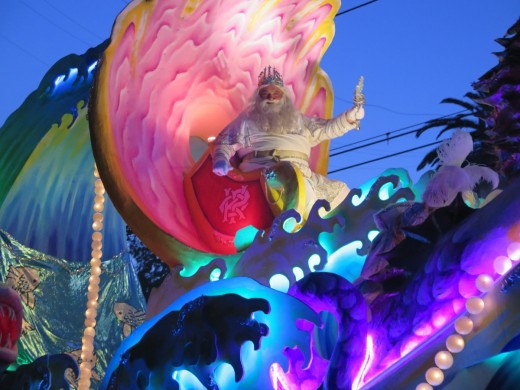Spanish Town Mardi Gras Parade in Baton Rouge
Mardi Gras carnival season is in full swing here in Louisiana. The highlight events of Mardi Gras for the public are elaborate parades organized by secret societies called krewes. The costumed riders on the floats throw beads and other trinkets to the crowds. Baton Rouge celebrates it’s own take on Mardi Gras by having a “spoof” on Mardi Gras krewes and parades. The theme is usually some sort of political or social satire and the individual groups carry out their interpretation of the theme in float decorations which are often very risque. This is an adult event; no censorship. This year the theme is “Drain the Perversion Canal.” You can imagine what type of decorations were concocted.
This is the 39th year for the Spanish Town parade. It began as a small event organized by friends in a downtown neighborhood. The parade has grown into a huge city event, run by a non-profit civic association,”Society for the Preservation of Lagniappe in Louisiana”, and features floats by community organizations and groups of friends. The parade has moved up to a prime time slot, Saturday afternoon just before Mardi Gras. This year the parade rolled on March 2, 2019.
The parade is named after the part of town, Spanish Town, which was settled in 1805 by Canary Islanders. These people had left Spanish-ruled Galvez Town, southeast of Baton Rouge, when it was ceded to the U.S. as part of the Louisiana Purchase. Baton Rouge, interestingly, stayed in Spanish rule. Nevertheless, the Islanders, who had only wanted to continue living under Spanish rule, ended up as a part of American several years later when Spain turned over the “Florida Parishes” to American rule.
The Spanish Town Association held the 30th annual Mardi Gras Ball on February 16, 2019, in the downtown civic center with a sea of pink costumes and revelry. The Queen and King are selected in December by the association. Reigning as Queen this year was Gabby Loubiere, owner of Brew-Ha-Ha – a local coffee house. The King was Daniel Hoffmann, who might be better known as “Golden Boy.” He is a local health professional. His notoriety this year was posing at various locations around the LSU campus as a “Golden Girl” (member of the elite LSU marching team) — just for fun — in an costume he sewed himself. For the parade he wore a hot pink number. Can you identify him in the photo below?
Pink flamingos, pink beads and costumes are the traditional norm as the neighborhood has a substantial gay component.
“Drain the Preversion Canal” led to many interesting floats. This float says, “Paddle faster, we hear banjos”, as the political parties paddle in opposite directions..
Some were political floats, many were associated with the Saints football team’s unfortunate loss in a play-off game. Folks believe that the game was lost due to missed-calls by referees, which cost the Saints a trip to the Super Bowl.
Hillar Moore, District Attorney, walked as part of Italian float.
There were other interesting floats.
And,
Just a little risque — Stormy Daniels hails from Baton Rouge.
And,
And,
Much political satire.
Always an interesting afternoon.
See more floats in the “gallery,” no censorship.
What is Mardi Gras?
The tradition of Mardi Gras was brought to the new world by French explorers Pierre Le Moyne d’Iberville and Sieur de Bienville who landed near New Orleans on March 3, 1699. It was Lundi Tuesday. They held a small celebration and named the spot where they landed Point du Mardi Gras. Mardi Gras translates from French as “Fat Tuesday” and refers to a day of eating rich foods before the religious sacrifices associated with Lent beginning on Wednesday in the Catholic Church.
This year Mardi Gras falls on March 5. Mardi Gras actually begins on January 6 or the Feast of the Epiphany in the Catholic Church and continues until the day before Ash Wednesday which begins Lent. For the public, Mardi Gras in Louisiana is associated with elaborate parades organized by secret societies or krewes which roll out on the weeks before Mardi Gras. For the krewes, Mardi Gras is associated with pageantry, costumes, balls and royalty of kings, queens and their courts. Over the years, Mardi Gras has become far more that a celebration of a Catholic holiday. It is a “carnival season” in Louisiana. As you can see, the Spanish Town parade has lost all association with the original theme of partying hard until Lent. It has to do with preserving “Lagniappe” — or “something extra” which makes Louisiana such a special place.



